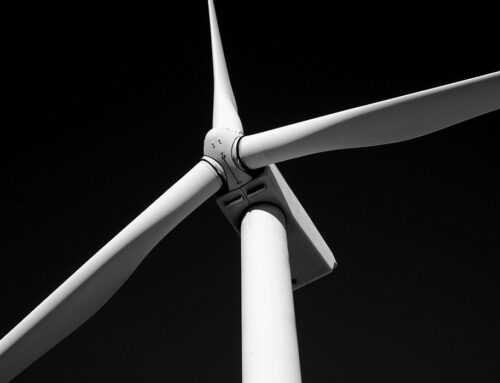We as humans require energy, to power our homes, cars, phones and all of the other fantastic technological innovations that continue to change and benefit our lives. But we can’t create energy – we simply move it from one state to another. The natural world is suffering and being forced to adapt or die. We are in a true climate crisis and we must act now.
In recent times, we have used the energy stored in plants and trees that covered the earth many millions of years ago. We have mined coal and drilled for oil and gas, ultimately burning fossil fuels to convert the energy into motion for cars or electricity from power stations. In more recent years we have realised that the by-products of combusting hydrocarbons have accelerated the warming of the planet. We have reached a crucial point in history. So how are we going to provide the energy that we crave as a society and prevent further damage to our fragile planet? Renewable energy is a great start. Wind turbines are power stations with no fuel cost. They are the cheapest form of new electrical generation there is. But what about hydrogen?
The Role of Hydrogen in green energy

Hydrogen is the most abundant element on the planet, which is a great start if we are looking to use this as part of our energy mix. Isn’t Hydrogen a finite resource? – are we not trying to move away from these? Hydrogen can be produced in many ways. There are different types of Hydrogen; Grey, Blue and Green. This is not to say that the hydrogen atoms themselves are coloured, it is just a way of distinguishing how they are produced.
The Colours of Hydrogen
Grey Hydrogen – mostly comes from the industrial production of natural gas, which generates significant carbon emissions.
Blue Hydrogen – This is a cleaner version, for which the carbon emissions are captured and stored, or reused.
Green Hydrogen – It’s the cleanest form, which is generated by renewable energy sources without producing carbon emissions in the first place.
Cast your mind back to a dim and distant common science experiment at school: water molecules were split into Hydrogen and Oxygen by passing an electrical current through water, a process known as electrolysis. If this electricity comes from the wind, sun, or wave, then this Hydrogen is Green. Hydrogen can then be burnt and if this is with pure Oxygen the only by-product is water.
Hydrogen fuel cells are, in simple terms, a way of reversing of electrolysis, converting Hydrogen and Oxygen into the water and creating electricity.
The issues of using Hydrogen
Practical issues are arising from both burning solely hydrogen in our current natural gas grid system and overcoming technical issues to produce more efficient and cost-effective fuel cells. As you would imagine, the largest producer of hydrogen can deliver the lowest market price, and that would be Grey. The cost of technology for fuel cells is dropping as development progresses, but they are certainly not cheap at present.
The role of Hydrogen in our energy system

Hydrogen can play an amazing role in our energy system and reuse some of the hydrocarbon assets we have now. Take offshore wind for example, like its cousin onshore wind, the cost has reduced dramatically over the last decade. But when you think about the practicalities of installing a wind farm you need to connect the turbine to the grid to export the energy. Laying cables hundreds of miles across the seabed is very costly, takes significant time and needs the grid to be able to deal with its supply. However, if you were to deploy floating offshore wind and not connect it to the grid but create hydrogen on-site, this can be shipped in existing gas carriers (huge ships which we already use from transporting natural gas) and housed in existing gas storage facilities, effectively allowing the energy to be converted from wind to be transported and stored, ready for use onshore without huge infrastructure costs of electricity transportation.
The world’s most abundant element has a significant role to play in our more sustainable energy mix as long as it’s the green and not the grey variety.





